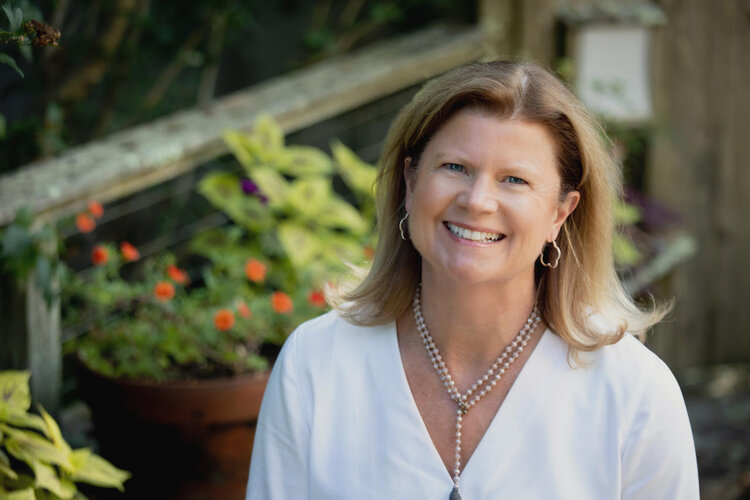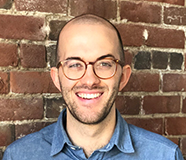 When Allison Ingalsbe joined the SEG Incubator in 2018, she had been an educator for 25 years and was just at the beginning of her new career as a social entrepreneur. A passionate advocate and experienced practitioner of design thinking, she was ready to start her own business as a consultant and needed the support of a community and the right tools to take that big step. We connected with Allison in a Zoom conversation recently to learn about her journey in founding Allison Ingalsbe Creative Strategies.
When Allison Ingalsbe joined the SEG Incubator in 2018, she had been an educator for 25 years and was just at the beginning of her new career as a social entrepreneur. A passionate advocate and experienced practitioner of design thinking, she was ready to start her own business as a consultant and needed the support of a community and the right tools to take that big step. We connected with Allison in a Zoom conversation recently to learn about her journey in founding Allison Ingalsbe Creative Strategies.
Austin Wilson: How would you describe design thinking to someone who might have heard the term but doesn’t know what it’s all about?
Allison Ingalsbe: Very simply, design thinking is a framework for creative problem solving, for creating new products or services or even disrupting systems. It can be difficult for people to understand sometimes because of the word design. It’s also referred to as human-centered design because it puts people at the center of the process right from the beginning. By starting with empathy, you find out what people want and need before brainstorming possible solutions to a problem. Design thinking is collaborative and also supports diversity and inclusivity. It’s the diversity of the team’s experience and expertise that allows them to create something that isn’t just a safe solution but the result of thinking broadly – big, crazy, audacious ideas.
AW: How does it work?
AI: You do that research, understanding, and discovery step up front to ensure you understand what the needs are related to the problem and to be sure you are solving the correct problem. Then you move through the process of brainstorming, prototyping, and testing. It’s an iterative process that’s not linear at all and allows you to keep going back and testing a possible solution to see if you need to tweak it, or if you need to just scrap it altogether and start over. One of the beauties of design thinking is that it’s a quicker process. You learn quickly through prototyping and testing, and you haven’t lost a lot of time or resources if the solution isn’t right.
“As we grapple with racism as a society, there are opportunities to use design thinking as a framework to help support DEIB initiatives and programs so that they are sustainable and authentic and become part of the organization’s culture versus just checking off the box.”
AW: How did you get interested in design thinking?
AI: I taught at a boarding school for 25 years and my content area was French. I took students to Paris every year for a cultural immersion program that was centered around internships. They loved working and seeing how what they learned in the classroom was connected to the larger world. They also saw that the work they did contributed in a meaningful way. And I saw how that was such a powerful learning experience – the hands-on, real-world work. I was lucky to be able to have opportunities to build other global programs, and eventually I took on a big schoolwide design thinking initiative. The design thinking framework is very hands on and experiential in nature. It put all the positive outcomes I was seeing and experiencing with the students and the internship programs in a new perspective. I even shifted my teaching to be much more student-centered and experiential – I became much more of “the guide on the side” than “the sage on the stage.”
AW: So your thinking was evolving also!
AI: Yes, the more I got out of the way and just created the environment for learning, the deeper the learning and the higher the impact. And I saw that same thing was true of design thinking. And then, little by little, friends asked me if I would work with their team or with their board. I was getting out into the community and using the same design thinking framework and I saw how powerful it was in different contexts. So all of a sudden, my little sliver of teaching French and building global programs for students opened up and I realized I was ready for a change and a next step. Design thinking put everything in a framework that resonated really loudly with me. I saw how I could use it in multiple ways across industries, with students or with CEOs and everyone in between. And no matter what, there was always a positive outcome and impact.
AW: Is that when you decided to focus more time on it?
AI: It was. I really wanted to do more in the community, and I was ready for a change and wanted to grow professionally in new ways.
AW: How did SEG come into the picture?
AI: I knew I liked being part of a community and a team, and at that point I was trying to figure out, how am I going to do this by myself? I thought a lot about it over the summer of 2018. As I was doing some research and looking around Rhode Island and Providence to see what people were doing, I heard of Social Enterprise Greenhouse through a good friend. I ended up on the website and saw the Incubator and Accelerator programs. And it was like the light bulb went off.
AW: You saw how to make it work?
AI: Right, because then I didn’t have to do it alone. I ended up applying to the next SEG Incubator. It really was getting into that Incubator that gave me the confidence, number one, but also the tools, resources, and community for me to make that big leap into solo entrepreneurship. It made all the difference for me.
“My affiliation and work with SEG really helped me begin to build a network and relationships, and that’s been hugely helpful.”
AW: Could you talk a little bit about your experience in the SEG incubator?
AI: The biggest thing was that all of a sudden I’m going from a very, very structured environment to wanting to start my own business. So I didn’t know what I didn’t know.
AW: Were there specific topics that you felt helped you, or an important takeaway that you learned?
AI: Every session had a different focus from marketing to creating a lean business canvas to learning about different types of legal entities. Each session helped me think about, What do I need to be doing as I build my business? I had my design thinking framework, but I also needed a framework to start my business. Because there was good diversity in our cohort, some people were further ahead and had more expertise or more business background than others. And I loved that – the exchange between the different individuals and their ventures so that we were all learning from each other.
AW: Were there any big surprises for you?
AI: Again, it really showed me all the things I needed to think about. I remember feeling very overwhelmed. I know now there will always be growth involved and that my business will evolve and become more complicated. But I also know that at any point, if I need something, my first thought is to go to SEG to see who within the SEG community I can chat with or get advice from. My affiliation and work with SEG really helped me begin to build a network and relationships, and that’s been hugely helpful.
AW: How do you describe your mission?
AI: My mission is to help teams leverage their diverse expertise and experience to transform challenges into opportunities using design thinking to unlock what’s possible.
“Design thinking is actually about mindsets: embracing ambiguity, collaboration, creative confidence, experimentation, and testing.”
AW: What are the different services that you offer and who is your typical client?
AI: I offer a range of services, from three-hour workshops to multi-day bootcamps and long-term projects that may last several weeks. Because design thinking can work across industries, I go in as the expert to facilitate a process, not as someone with the answers. So I’ve been very open to who I work with. Last year I worked with middle schoolers who had been challenged to redesign the Museum of Natural History’s Native American exhibit. I’ve worked with local banks and teams that are in human resources, hospitality, and sales. The pandemic has also created many new pressing challenges, such as how to keep remote teams connected and what returning to work will look like. As we grapple with racism as a society, there are opportunities to use design thinking as a framework to help support DEIB initiatives and programs so that they are sustainable and authentic and become part of the organization’s culture versus just checking off the box.
AW: How do you relate that to thinking of yourself as a social entrepreneur? Does what you’re doing with design thinking affect how you think about social enterprise?
AI: That’s the one thing I knew I wanted to do when I launched my business. I want everyone to have access to the design thinking framework as a way to solve complex problems. Design thinking is actually about mindsets: embracing ambiguity, collaboration, creative confidence, experimentation, and testing. Anyone can learn these mindsets and the design thinking framework. There are so many local organizations and social enterprises who are doing such good work to build strong, equitable and inclusive communities. Design thinking could help them tackle their challenges and innovate. As a social entrepreneur, I want to make design more accessible to those organizations who are creating impact.
AW: How is your venture doing now? How big a factor has COVID-19 been?
AI: It’s been a huge factor. You know, I still am very much in my business development phase. Someone from SEG told me that it takes three years, and this is year two. Things took an interesting turn with COVID. My workshops are about bringing people together and collaborating – and that creates this amazing energy in the room that I love. So all of a sudden that can’t happen. I started looking to see what tools were out there to run workshops and collaborate virtually. I discovered a virtual platform called Sprintbase that puts the entire design thinking process and framework in one space. I’ve been using it nonstop ever since. It allows everyone’s work to be captured and saved, so teams can work collaboratively, both synchronously and asynchronously. They can be in the same room, on different continents, in different time zones. It’s a really great platform with excellent built-in learning resources as well. And that resonates with the teacher in me!
AW: I love how so much of your story as an entrepreneur is about just launching into things. Do you have any advice for other social entrepreneurs who are thinking about taking a leap?
AI: Just do it and then engage – find a community that gives you the support and the tools and the resources that you need so that you don’t feel alone. I think that is maybe the toughest thing when you make such a big leap. Surround yourself and put those support systems in place so that you can navigate as a solopreneur but you’ve got your safety net when you need it. I’m really grateful to have SEG as part of my professional journey!
By Austin Wilson
Program Senior Manager

